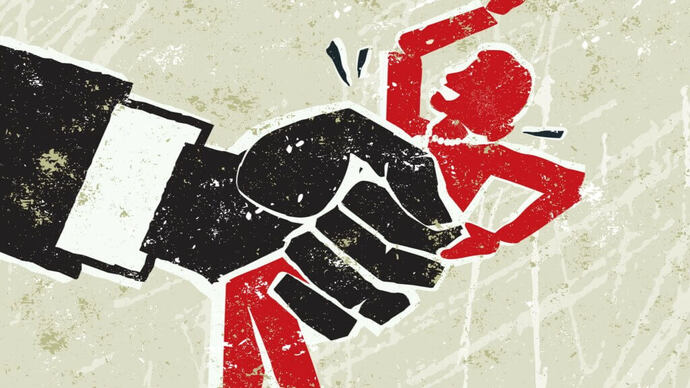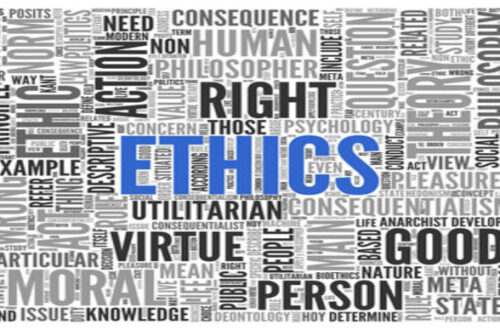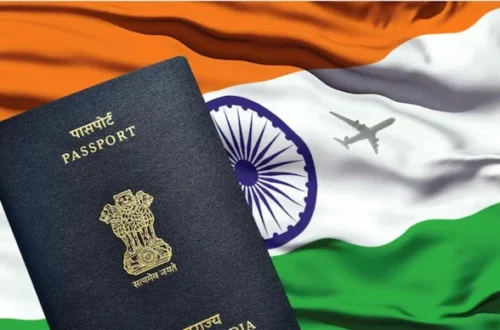ABSTRACT
India has always followed the path of patriarchal society. This age long tradition has never died due to the circumstances and upbringing of youth in such environment which glorifies it. Gender inequality is an extensive issue in communities taking forms of violence against women, and particularly domestic violence, which then forms a vicious cycle that always keeps women subordinated, disempowered and unequal. This gender parity needs to be looked after. In the recent times of the COVID-19 pandemic where economic, social, political, personal, professional positions are at stake and facing huge repercussions. The most hardly hit area is the women community. The crime of domestic abuse suddenly ramped up after the announcement of lockdown not only in India but all over the world. The pandemic has ended up leaving the domestic violence victims helpless& nowhere to go for the enforcement of their rights. Amidst this corona pandemic, a hidden pandemic is emerging out i.e. Domestic Violence which will not end unlike the lockdown will one day. This paper will go in deep lengths analysing the DV in the pandemic, reasons of surge in cases, measures taken and provisions in the DV Act. There is an urgent need for this issue not to get ignored this time. We (the government, the society, the individuals) should not wait for such pandemics to erase out one of the gravest menaces in our society.
Keywords: Domestic Violence, Pandemic, Law Enforcement, Abuse, Women Community.
INTRODUCTION
Liberty, equality, fraternity were the ideals on which the French revolution was based, led by Robespierre, resulted in the establishment of people’s rule commonly known as democracy. Our Constitution upholds these ideals by accommodating them as a fundamental right of every individual. In the past 70 years, the state has successfully ensured the political equality to its citizens but social and economic equality are still a far-reaching dream to ordinary women and especially to women. In the words of the former Chief Justice of India RC Lahoti, women, children, tribal and minority communities, victims of militancy, crime, disaster, drought-hit farmers, and sex workers needed urgent attention[1]. “Violence against women is a manifestation of historically unequal power relations between men and women, which have led to domination over and discrimination against women by men and to the prevention of the full advancement of women…”[2] The concept of domestic violence is not a new phenomenon nor are its consequences as it is a long- aged menace still exists in our society. The violence perpetrated on women is not only a social issue but also a health, economic, developmental, educational & above all a human rights issue. It is one of the most pervasive of human rights violations globally. The family is often equated with sanctuary – a place where individuals seek love, safety, security, and shelter[3] but research shows evidently that it has also become the place where lives are put in peril and breeds drastic violence against girls and women. In 1992, the united nation committee on the Elimination of Discrimination against Women (CEDAW Committee)[4] stated Article 6 that gender based violence, “violence that is directed against a woman because she is a woman or that affects women disproportionately” and that is “is a form of discrimination that seriously inhibits women’s ability to enjoy rights and freedoms on a basis of equality with men” (Article 1)[5]. Certain variations in the existence of violence between and within the communities proves that it is not inevitable and can be rooted out by preventive measures.
DOMESTIC VOILENCE IN CURRENT PANDEMIC
“Confinement is a breeding ground for domestic abuse.”[6]As recently noted by the UN Secretary General, global lockdowns have resulted in a “horrifying surge” in gender-based violence (GBV).[7] The whole world is witnessing a sharp rise in the violation of rights of women. Not only the developing countries like India became victim to this curse during pandemic but also highly developed countries like UK, USA, Australia, France, Germany, Hong King & many more countries succumbed to it. Imposition of nationwide lockdown has deteriorated the situation in India. India’s National Commission for Women (NCW) said it registered 587 domestic violence complaints between March 23 and April 16 – a significant surge from 396 complaints received in the previous 25 days between February 27 and March 22.[8] It is most likely that the no. of domestic violence is much more higher than the real figure as one more factor exists which is liable for exaggerating this problem is that the victim locked in with the abusers might not get access to a mobile phone and time to call for help. Most of the avenues which help them to fight these situations are impaired. And to worsen the situation, opening of liquor shops post lockdown, added fuel to fire.
CAUSES OF SURGE IN CASES IN PANDEMIC
There is no single factor responsible for the violence perpetrated against women. Several researches have indicated that there is an interconnectedness of various social, economic and cultural factors which accounts for this worst form of violence. According to sociologist Marianne Hester, “domestic violence goes up whenever families spend more time together, such as the Christmas and summer vacations.” [9]The data shows that amidst this lockdown the complaints of domestic violence has nearly doubled evincing the idea of patriarchy being dominant till today. Stress, the disruption of social and protective networks, and decreased access to services is exacerbating the risk of violence for women.[10] Women’s unpaid care work has long been recognized as a driver of inequality. It has a direct link to wage inequality, lower income, poorer education outcomes, and physical and mental health stressors. The unpaid and invisible labour in this sector has been exacerbated exponentially by the COVID-19 pandemic.[11]
Another important aspect responsible for this surge in domestic abuse is domestic labour. Gendered roles all over the world have placed domestic work on women’s shoulders, which is socially and culturally often demarcated as “women’s work.” During this pandemic the work load of women has increased due to all the members being at home. With housekeeping staff being unavailable, the expectation is for women to do all the tasks and that too with full efficiency and productivity, and chances of violence increase if she fails to do so.” Economic factor has played a crucial role in surging this violence. A large chunk of women population is suffering from the economic dependence on the male counterpart. According to the Centre for monitoring Indian Economy, the national lockdown did not just throw 72 million out of the labour force but it also drove another 85 million to some kind of desperation to look for jobs in the midst of a national lockdown when none were available.[12]This scenario suggests that people are highly vulnerable to a loss of livelihood. Men are not able to prove themselves at the economic front. They are workless doing absolutely nothing and the burden to make a living for the family with the inability to do it has led to frustration of which then women are the victim. The increasing financial burden and the needs of the family especially in poor strata of the society is making the situation worse. Such sorry state of affairs definitely comes under the umbrella of factors which perpetuate this violence
Domestic violence is in form of rapes and sexual harassment as well and COVID-19 time sets out the classic example of it. 2crore babies are to be born in India till December 2020.[13] This is the highest no. recorded so far. The question it raises now is that will all these babies be born with the consent of women. India has still not penalized marital rape. It may happen that women during the time of pandemic were subjected to force and since they are always considered to be subordinate and disempowered, they had to give in.
GOVERNMENT’S MEASURES
With cases of DV swelling every day, the situation is becoming very grim. And it becomes the duty of the executive and judiciary to implement the laws and take effective measure in cases of non-compliance. Recently, to tackle the situation better Delhi HC has directed the Delhi government to mull over the appointments of protection officers. The National Commission for Women (NCW) also launched WhatsApp helpline numbers to protect them from harassment & in grave cases Crisis intervention centre (CIC) through counsellors accompany the aggrieves person & make possible the recourse to public authorities. A laudable initiative by the UP Police has also been launched named as “Suppress Corona, not your voice” which encourage them to be vocal against the crime. The Tamil Nadu government has also made a fruitful decision on protection officers. Clearly, the steps taken are appreciated but they are not sufficient to handle the emerging statistical numbers in cases of DV. [m1]
HUMAN FRAMEWORK: NECESSARY TO COMBAT
as a responsible citizen of the country under Article 51a of the Constitution, we have certain fundamental duties to perform on our part of which one is , “to promote harmony and the spirit of common brotherhood amongst all the people of India transcending religious, linguistic and regional or sectional diversities; to renounce practices derogatory to the dignity of women”[14]. We need a comprehensive nationwide campaign to bring awareness among the people and make them sensitized towards this issue. These issues must be highlighted through various modes like, Radio channels, National news channels. These platforms must be strategically used in the same way as the government has used for washing hands and social distancing to combat COVID-19.
“Reaching out to people facing domestic violence and in distress needs to be classified as an ‘essential service’ by the government.”
Citizens must be sensitised towards the increased risks of domestic violence, and bystanders and neighbours should be urged to intervene if they suspect abuse, using tactics such as the banging on the door or ringing the bell. They should also be provided the benefit of anonymity if they choose to report a case.
When people are unable to file complaints through messages, post, or calls, essential services such as hospitals, grocery stores, and medical stores must be urged to help people get necessary support and send their messages to the authorities if needed. In France and Spain, pharmacies are being trained to identify people facing abuse through codewords: asking for ‘mask 19’ is being used as a code for people who cannot speak openly, to indicate that they are being abused and are seeking help.
- Civil society organisations are critical to providing assistance. Hundreds of nonprofits are working to enable access to medical assistance, legal aid, counselling, 24×7 shelter needs, and so on. Therefore, in its efforts to combat COVID-19, the government must allow civil society organisations, counsellors, mental health organisations, and other service providers to come to the aid of people facing domestic violence. Learn more about the ‘Bell Bajao’ campaign and how to intervene if you suspect domestic violence.
- Read about recognising signs and patterns of domestic abuse, and how to break the cycle and create safety plans.
PROVISIONS OF DOMESTIC VOILENCE ACT, 2005
The effectivity of the legal framework in India is at stake during COVID. we will analyse if the women are protected by the provision’s domestic violence act, 2005.
First and Foremost, domestic violence leads to abuse of Human Rights and Fundamental Rights for example, Right to Live with dignity (Art.21), Right to live in healthy environment and in good health (Art.21) granted by Indian constitution is violated. In the case Francis Coralie Mullin vs. The Administration, the Hon’ble Supreme Court recognised the right to be free from physical violence. Moreover, in the case, Ahmedabad Municipal Corporation vs. Nawab Khan Gulab khan’s case, right against emotional and sexual abuse was also protected by the apex court. [m2]
Coming to the Act, Section 11 of the Domestic Violence act describes that government is obliged to raise awareness in the society by regular publicity of issues through the use of print and media which has not been adhered to. In addition to this, section 8 and 9 of the acts has not been implemented in its whole as only some states are considering doing this[m3] . What is even more problematic is the restricted access or recourse to the public authorities. The section 7 of the act which provides for medical facilities is also not acted upon as the list of essential items lacks sanitary napkins which is a necessary. [m4]
THE WAY FORWARD
There is no doubt in the fact that the judiciary even in these tough times has imparted its services in a very hardworking way by establishing virtual courts and ensured justice to the victims. But still the efficacy of policies and redressal mechanisms needs re-assessment in one way or the other. Not only the physical but also the emotional and psychological health is at stake when an act of domestic violence takes place against her. So, we need to build a safe and secure place for the women by ensuring checks and balances. [m5] This menace can be banished completely by way of “community-based network” which will instil a sense of fear or shame before the commitment of such act by the abuser[m6] .
These crimes are committed not only against the women but also against the democracy, humanity, natural laws and most importantly our legal system. The “Intimate Terrorism” needs to be curbed as soon as possible before the human rights issue especially (Women’s right issue) become a joke for the abusers in the time to come. The government along with the NGOs can protect the vulnerable section and help them to survive the pandemic by the setting up of emergency warning system so that women could reach out to authorities without alerting the abusers. The issue of women’s sexual and reproductive health should be taken up as this is the need of the hour. It is high time that we as responsible citizens of this country start taking this issue to as our priority. To sum this up, Swami Vivekanand truly said, “There is no chance for the welfare of the world unless the condition of woman is improved. It is not possible for a bird to fly on only one wing.”[m7]
[1]FINANCIAL EXPRESS: http://www.financialexpress.com/news/legal-literacy- mission-launched/128689/
[2]The United Nations Declaration on the Elimination of Violence against Women, General Assembly Resolution, December 1993. domestic violence against women and girls, No.6 – June 2000, innocent digest.
[3] ibid
[4] The CEDAW Committee is a body of 23 independent experts on women’s rights around the world; it monitors the implementation of the Convention on the Elimination of All Forms of Discrimination against Women (CEDAW), which entered into force on 3 September 1981. As at January 2014, 187 countries have ratified or acceded to the convention.
[5] UN, CEDAW Committee (1992), General Recommendation No. 19 on Violence against women, adopted at the 11th session, 1992, A/47/38, 29 January 1992.
[6]Abueish, Tamara (2020-04-06). “Coronavirus: A Jordanian woman pleads for help as domestic abuse cases rise globally”. Al Arabiya English. Retrieved 2020-04-14.
[7]https://news.un.org/en/story/2020/04/1061052
[8]https://www.aljazeera.com/news/2020/04/locked-abusers-india-domestic-violence-surge-200415092014621.html
[9]https://www.epw.in/engage/article/covid-19-domestic-abuse-and-violence-where-do
[10]https://apps.who.int/iris/bitstream/handle/10665/331699/WHO-SRH-20.04-eng.pdf
[11]https://www.unwomen.org/-/media/headquarters/attachments/sections/library/publications/2020/policy-brief-the-impact-of-covid-19-on-women-en.pdf?la=en&vs=1406
[12]https://www.businesstoday.in/current/economy-politics/india-unemployment-rate-falls-to-21-per-cent-lowest-during-coronavirus-lockdown cmie/story/402240.html?utm_source=recengine&utm_medium=WEB&referral_sourceid=400902&referral_cat=Jobs
[13]https://news.rediff.com/commentary/2020/may/07/2-crore-indian-babies-will-be-born-amid-covid/1219996638a43728f4






